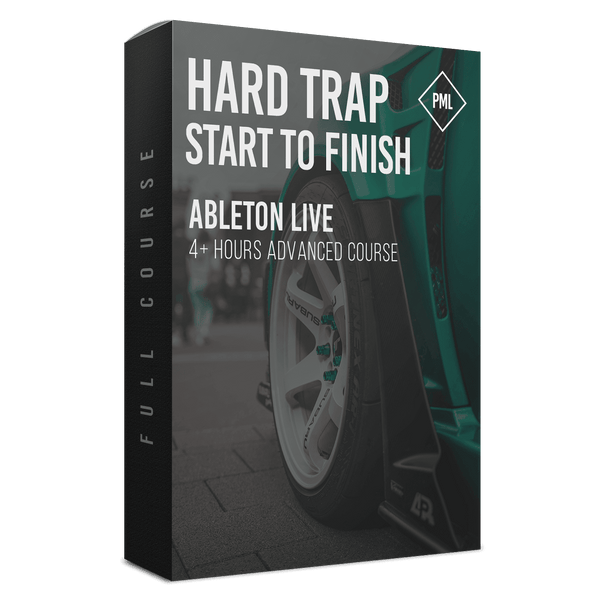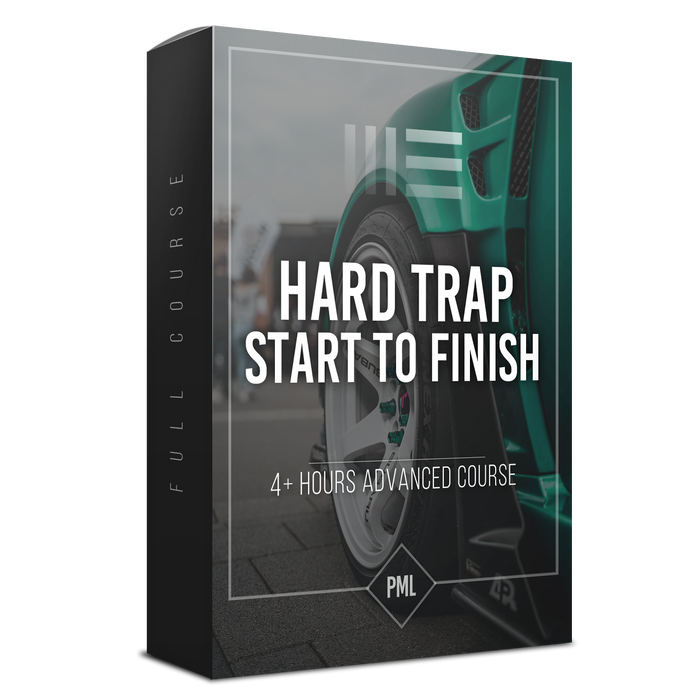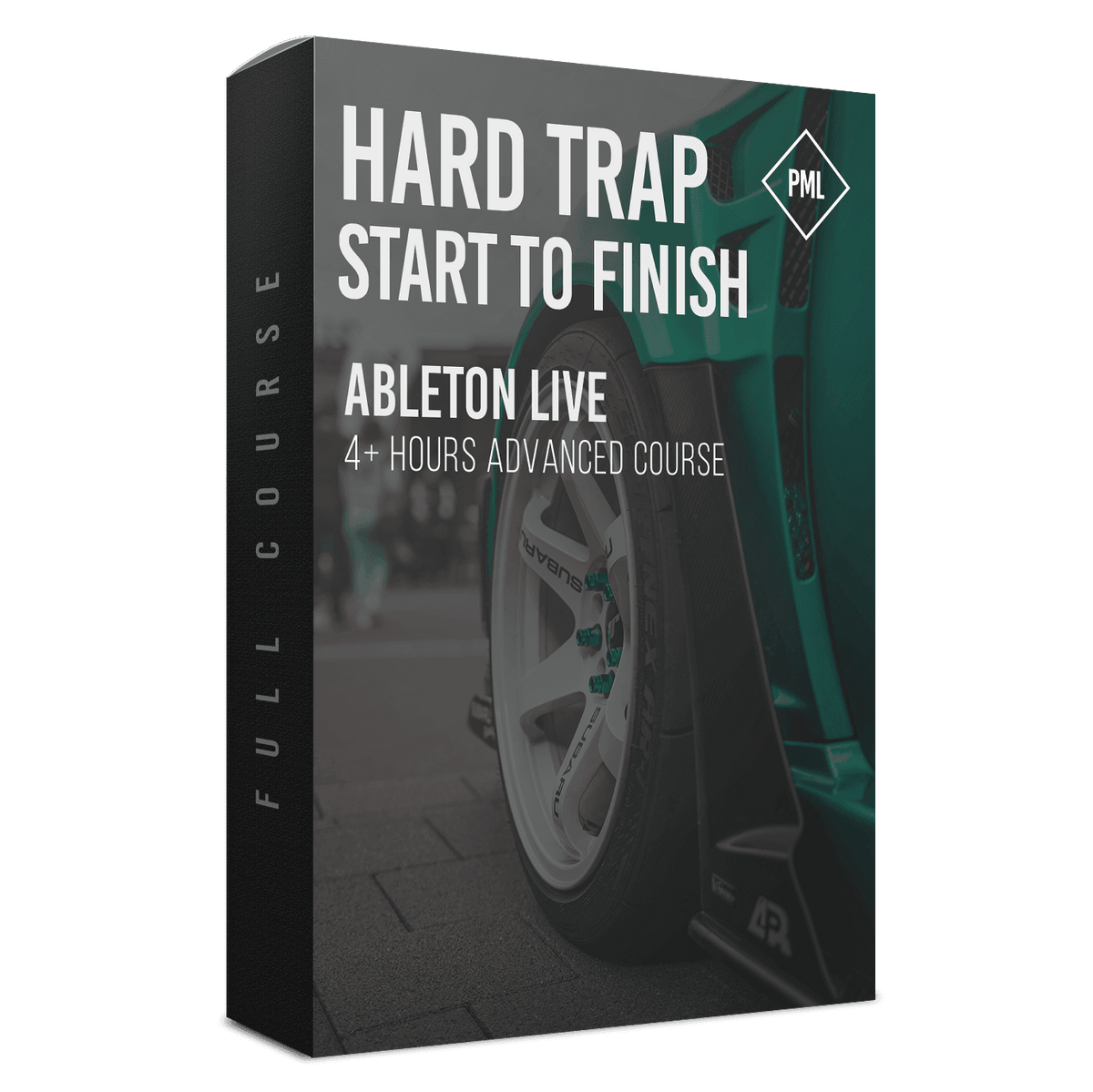Create a Hard Trap track in Ableton from start to finish by using aggressive sounds and heavy drums combined with distorted 808s. To make a Hard Trap sound, start by selecting the right tempo and creating a pattern for the drums, then layering them with various claps and snares.
Use distortion effects on your 808s to create a heavy, aggressive sound and add in some melodic elements to give the track depth. Finally, mix and master the track to achieve a professional sound. Hard Trap is a subgenre of Trap music that is known for its aggressive and hard-hitting sound.
It combines elements of electronic dance music with modern Hip-Hop, blending aggressive sounds and heavy drums with distorted 808s to create a unique and powerful sound. Creating a Hard Trap track requires an understanding of the genre’s characteristics, the right tools, and creativity. We will guide you through the steps to create a Hard Trap track in Ableton from start to finish, providing tips and techniques to help you achieve a professional sound.

Credit: www.productionmusiclive.com
Getting Started
If you’re looking to make hard-hitting Trap beats, you’re in the right place. With Ableton Live, you can create a whole track from scratch within a single interface. This tutorial will guide you through the entire process of making a Hard Trap beat from start to finish.
Setting Up Ableton Live
First things first, you need to make sure Ableton Live is set up correctly. Here are the steps to follow:
- Download and install the latest version of Ableton Live
- Connect your MIDI controller (if you have one)
- Connect your studio monitors or headphones
- Configure the audio and MIDI settings in Ableton Live
Once you have set up Ableton Live, you’re ready to start creating.
Creating A New Project
Let’s create a new project and get started on making our Hard Trap beat:
- Open Ableton Live and create a new project
- Choose your desired tempo and time signature
- Create a new MIDI track
- Choose a Hard Trap drum kit or create your own
- Add a Hard Trap kick, snare, hi-hat, and percussion to the MIDI track
- Edit the MIDI notes to create a pattern for your beat
Congratulations, you’ve just created the foundation for your Hard Trap beat.
Choosing The Right Sounds
Choosing the right sounds is essential to creating a killer Hard Trap track. Here are some tips:
- Choose sounds that are gritty and industrial
- Use distorted basslines and 808s to add weight to your track
- Experiment with different sound effects
- Layer different sounds to create a unique sound
Remember, the key to creating a Hard Trap beat is to keep it simple and hard-hitting. Don’t be afraid to experiment and try new things.
That’s all for the Getting Started section of this tutorial. In the next section, we’ll dive into the specifics of creating a killer Hard Trap melody.

Credit: www.productionmusiclive.com
Creating The Melody
Learn how to create a hard trap melody from start to finish in Ableton with our comprehensive tutorial. Follow along as we guide you through the process of creating a unique, standout melody that will elevate your trap productions.
Creating the melody is the backbone of any composition, and for hard trap, it is no different. Hard trap music is characterized by its complex and heavy melody lines, which are the lead instruments for the entire track. In this section, we will discuss how to create the melody for your hard trap track, step by step.
Using Midi Instruments
Before we dive into the process of designing a melody, it’s essential to choose the right MIDI instruments to work with. Generally, hard trap music relies heavily on synth sounds and digital instruments that can produce sharp and rich sounds. Therefore, it’s essential to pick the right MIDI instruments to achieve the desired sound. Here are some popular MIDI instruments for hard trap music:
| MIDI Instrument | Sound Type |
|---|---|
| Massive | Heavy Basses |
| Serum | Sharp Synths |
| Sylenth1 | Digital Synths |
Designing A Melody
Once you’ve selected your MIDI instruments, it’s time to start designing the melody. It’s important to remember that the melody should be the focal point of your track. It should be catchy and memorable, so your listeners can immediately recognize it. Here are some steps to follow when designing a melody:
- Start by creating a four to eight bar loop; this will be the foundation for your melody.
- Use a pentatonic scale as the basis for your melody. These scales are widely used in hard trap music because they are easy to work with and create instant emotion.
- Experiment with different note sequences to find a catchy melody that you like. Often, simple melodies are the most effective in hard trap music
- Add some pitch bends, modulation, and portamento to make your melody more dynamic. These techniques can add variation and interest to your melody.
Adding Variation
The final step in creating the melody is to add variation. Variation is essential in hard trap music because it keeps the listener engaged and interested. Here are some ways to add variation to your melody:
- Change the velocity of your notes to add some dynamics to your melody. This technique works well when you want to emphasize specific notes in your melody.
- Use arpeggiators to create fast and complex sequences. These can be used to add variation to the sections of your melody and prevent it from becoming repetitive.
- Experiment with different octaves to create a sense of movement in your melody. Shifting the melody to a lower or higher octave can create tension or release in your track.
By following these steps, you’ll be able to create a hard trap melody that’s catchy, dynamic, and memorable. Remember, the melody is the most crucial part of your hard trap track, so take the time to get it right.
Designing The Drums
Learn how to grind out hard trap beats from start to finish in Ableton with this step-by-step guide on designing the perfect drums. From creating the foundation to layering with effects, this tutorial will elevate your trap production game.
Crafting a catchy beat is the foundation of any Hard Trap track. Designing drums is a process that demands creativity, patience, and attention to detail. In this post, we’ll explore how to create a powerful Hard Trap drum sequence in Ableton Live, one of the most popular digital audio workstations (DAWs) out there. In this section, we’ll focus on selecting drum samples, building the kick and snare pattern, and layering percussion to add depth and impact to your track.
Selecting Drum Samples
Before diving into drum sequencing, you’ll need to select the right samples that define the sound of your track. Hard Trap drums need to be impactful and intense. Start by choosing a kick that packs a punch – look for samples that have a strong transient with a sharp attack and a long decay, around 20 to 50 Hz. Next, choose your snare sound – search for a snappy, punchy sample with a bright mid-range frequency. Also, remember that you can add multiple snares for a more complex and interesting sound. For the hi-hat and cymbals, focus on metallic sounds to add a shimmering edge to your track. Look for closed hi-hats, open hi-hats, and rides that complement your kick and snare sounds. Once you have the samples selected, create a drum rack in Ableton by dragging and dropping the samples you like.
Building The Kick And Snare Pattern
Now that you have your samples, it’s time to start building your kick and snare pattern. The typical Hard Trap beat follows a straightforward 4/4 rhythm, but there’s still room to create variation. For the kick, start with a basic pattern with the kicks landing on the first and third beats of the bars. For the snare pattern, you can add more variety to create a more interesting and complex beat. Experiment with placing the snares on the second and fourth beats, or add additional snares to create a rolling feel. You can also use a ghost snare on the off-beats to add extra rhythm to your beat.
Layering Percussion
Adding percussion to your beat adds depth and excitement to the track. Hard Trap drum patterns typically include a layer of percussion that complements the kick and snare. This layer could include shakers, tambourines, claps, or other percussive sounds. To layer percussion, create new tracks in Ableton and select percussion samples that complement your kick and snare sounds appropriately. It’s important to make sure each percussion sound fits in the frequency spectrum with other sounds without clashing. You can also experiment with panning and volume to create more space and movement in your track. Designing the drums is a critical step to creating a powerful and impactful Hard Trap track. With the right samples, building the kick and snare pattern, and layering percussion, you can create an excellent foundation for the rest of your production.
Adding The Bassline
Learn how to add a powerful bassline to your hard trap track in Ableton, in our comprehensive guide on producing hard trap from start to finish. Follow our step-by-step instructions and take your trap production skills to the next level.
Choosing The Right Bass Sound
The bassline is a crucial element of a hard trap track, and it is essential to choose the right bass sound for the genre. To get the right sound, you need to select the right plugin. You can use an 808-style bass or a distorted bass with a high-pass filter. Play around with different sounds until you find the one that fits the track.
Writing The Bassline
Now that you’ve chosen the right bass sound, it’s time to write the bassline. Start by making a new MIDI track and selecting the bass instrument. Keep in mind that the bassline should complement both the melody and drums, so it is important to listen to those elements while writing the bassline. Keep the bassline simple and repetitive. You can use the same pattern throughout the track, or you can introduce a variation at certain sections to add more interest.
Integrating It With The Melody And Drums
Once the bassline is ready, it’s time to integrate it with the melody and drums. To achieve a hard trap sound, you should keep the bass and drums in sync. You can do this by ensuring that the bass notes hit together with the kick drum. You can also use sidechain compression to carve out space for the kick drum in the mix. Make sure that the bassline and melody are in harmony with each other. You can add some pitch bends to the bassline to create more tension and interest. In conclusion, adding the bassline is an essential part of creating a hard trap track in Ableton. Choosing the right bass sound, writing a simple and repetitive bassline, and integrating it with the melody and drums are the key steps to get the desired result. With these tips, you can create a hard-hitting and catchy bassline that will keep the listener engaged throughout the track.
Mixing And Mastering
This tutorial covers the process of mixing and mastering a hard trap track in Ableton. From designing the sounds to arranging the composition, this step-by-step guide walks you through every aspect of creating a professional-sounding track.
When it comes to producing hard trap beats in Ableton, mixing and mastering are crucial steps that can make or break the quality of your final track. Balancing the levels, EQ and compression, adding effects, and mastering the track are important aspects of the mixing and mastering process that ensure a well-polished and professional-sounding beat.
Balancing The Levels
Balancing the levels is one of the most important steps in the mixing process. It involves adjusting the volume levels of each individual track in order to achieve a cohesive and balanced mix. You should aim for a mix where each element is audible without overpowering the others. A useful technique is to solo each track and listen to them individually and then compare them to each other to ensure the balance is perfect and the listener can hear every element.
Eq And Compression
EQ and compression are essential in the mixing process as they help shape the individual instrument and vocal sounds ensuring it’s clear and polished. You should use equalization to remove unwanted frequencies in your tracks and boost specific frequencies to enhance the sound. Compression can be used to increase the overall volume of individual tracks and make them more punchy and dynamic as well as making sure that the levels are consistent throughout the track.
Adding Effects
Adding effects such as reverb, delay, distortion, and filtering helps add depth and character to your beats. By using a combination of these effects you can create interesting and unique sounds. However, it’s important not to overdo the effects as it can cause the mix to sound muddy, cluttered, and unprofessional.
Mastering The Track
Mastering is the final step in the process that prepares the track for its commercial release. During mastering, you should use effects such as compression, limiting, and EQ to add final polish and get professional-sounding levels. The goal of mastering is to ensure the track sounds its best on any system. As you can see, mixing and mastering are essential skills for any producer. By following these steps, you can create professional-sounding hard trap beats in Ableton and take your music to the next level!
Arrangement
Learn how to create a hard trap track from start to finish in Ableton with this comprehensive arrangement tutorial. From building drum patterns to designing the perfect drops, this guide covers everything you need to know to create a powerful and impactful track that will impress listeners and get them moving.
Introducing Variation
When it comes to creating a hard trap track, introducing variation is crucial. Without variation, the track can become monotonous, causing the listener to lose interest. One way to introduce variation in your arrangement is by adding or removing elements from the track. For example, you can start with a few elements in the beginning and gradually add more as the track progresses. Similarly, you can strip away certain elements during the breakdown for a more minimalistic feel.
Creating Buildups And Drops
Buildups and drops are an essential part of any hard trap track. They create tension and release, which keeps the listener engaged. To create a buildup, you can start by gradually increasing the volume of the drums or adding more elements to the track. You can also use white noise or risers to create a sense of anticipation. When it comes to creating a drop, you can use a reverse cymbal or a snare roll to lead into the drop. Remember to keep the drop simple and impactful, so the listener can feel the release of tension.
Using Automation To Enhance The Track
Automation is a powerful tool in Ableton that can be used to enhance your hard trap track. You can use automation to create buildups and drops, add variation to the track, and create interest. For example, you can automate the low-pass filter on a lead synth during the buildup to create a sense of tension. Similarly, you can automate the volume of a sample during the drop to make it more impactful. Remember to be subtle with your automation, so it doesn’t become too distracting. Overall, arrangement is a crucial part of creating a hard trap track. By introducing variation, creating buildups and drops, and using automation, you can create a track that keeps the listener engaged from start to finish.

Credit: www.productionmusiclive.com
Frequently Asked Questions For Hard Trap From Start To Finish In Ableton
Can You Make Trap Beats In Ableton?
Yes, Ableton can be used to make trap beats. Ableton has a variety of tools, like samplers, synthesizers, and MIDI control, that can be used to create complex and unique trap beats. With the right knowledge, anyone can make high-quality trap beats in Ableton.
How Do You Warp From Here In Ableton?
To warp from here in Ableton, select the clip and turn on warp mode. Then, add warp markers to adjust the timing of the clip. Use the stretch marker to adjust the overall length. You can also use the warp modes for different types of audio material.
How Do I Use Ableton Drum Bus?
To use Ableton drum bus, first create a new audio track and name it ‘Drums. ‘ Then, route all drum tracks to it by sending their outputs to the drum bus track. This allows you to control their volume and apply effects to them as a group.
Use the drum bus’ built-in compressor and EQ to finesse your drum sound.
What Is Hard Trap?
Hard Trap is a sub-genre of Trap music that features aggressive and heavy basslines, hard-hitting drums, and dark, ominous melodies. It’s often characterized by its use of distorted, gritty sound design and aggressive rap vocals.
Conclusion
Now that you have a clear understanding of creating a hard trap from start to finish in Ableton, it’s time to start producing your own unique tracks. By following the tips and techniques mentioned in this post, you can elevate your music production skills and become a successful hard trap producer.
Remember to keep practicing, experimenting, and evolving your sound to stand out from the competition. Happy producing!